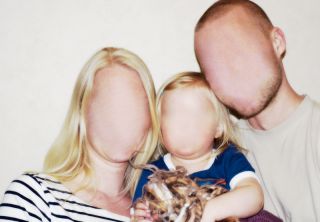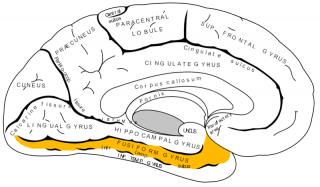Prosopagnosia
Prosopagnosia: Why Some Are Blind to Faces
What is prosopagnosia, and what do we know about its causes?
Posted September 23, 2013

A few months ago, I had an hour-long conversation with Professor P in his office discussing his course that had just wrapped up. We veered off-topic toward the end of our talk, broaching the subjects of his grad school days, scuba diving hobby, and my blogging.
Less than an hour later, I was loitering around the college's entrance in my coat, ready to go home for the day. I spotted Dr. P locking up his office and gave him a wave.
He eyed me strangely and walked a couple steps closer before returning the greeting. "Oh, didn't recognize you in the coat. You were wearing green earlier. Have a good night, Jordan."
It would have been a puzzling encounter if I didn't already know about his strange afflication.
Dr. P has prosopagnosia, or the inability to recognize faces. "I only identified you by the blonde ponytail," he admitted, evidently blind to my appearance in his class everyday—much less from our extensive conversation just an hour prior.
Fellow Psychology Today blogger and prosopagnosia sufferer Glenn Alperin uses a metaphor on his personal website to describe his affliction. "Imagine that every person has a camera inside their head. Every time they meet somebody for the first time, they take a picture with their camera, develop the picture, and file it away for future use. ...For me, I take a picture with my camera, but I never store it away."
Prosopagnosia (Greek for "prosopon" = "face" and "agnosia" = "not knowing") was originally thought to be a result of brain damage—a stroke affecting a particular brain region, for example. It is now recognized that around 2% of the general population has congenital prosopagnosia (or, in other words, they're born with it).
The inability to recognize faces—even those of close friends and family—sounds like anything from a dramative film plot to a lame excuse for not recognizing old acquaintances. But what causes it, really?

A brain region shown to activate specifically in response to faces, called the fusiform gyrus, has been implicated in the disorder. The fusiform gyrus is located in both the occipital and temporal lobes (shown in orange), which are responsible for visual processing and retaining visual memories, respectively.
Deficits within this temporo-occipital junction as well as the neighboring parahippocampal gyrus may explain other disorders that prosopagnosia sufferers also commonly experience, including problems with color perception or environmental disorientation (difficulty using landmarks to track one's surroundings).
Despite these shortfalls, those with the disorder often compensate by becoming attuned to others' non-facial cues, such as fashion, voice, gait, and body shape—but, more often than not, with a price on their personal and professional lives.
Such compensation is one of the reasons it's so difficult for doctors to recognize and treat prosopagnosia. Plus, neuroscientists don't really understand that much about how face recognition works in the brain.
Evolutionary psychologists are especially interested in the concept of facial recognition. Human babies show the capacity to recognize faces as young as six months of age, and the ability is seen in non-human primates, suggesting that it is a highly conserved, adaptive function.
At a young age, it allows us to identify our caretakers; at reproductive age, we can recognize potential mates' health and attractiveness. That's the thought, anyway.
"So many people hate me because they think I'm disrespecting them," Brad Pitt told Esquire magazine during his June 2013 cover interview, admitting that he believes he has prosopagnosia.
"You meet so many damned people. And then you meet 'em again."
Outspoken prosopagnosics like Brad, Oliver Sacks, Chuck Close, Jane Goodall, and bloggers like Glenn Alperin can help to dissipate the social stigmas—to put a face to prosopagnosia, so to speak.
Perhaps, eventually, scientists will be able to unravel the neural path to facial recognition—then work backwards to help the millions of individuals whose neurons, for whatever reason, took the wrong fork in the road. In the meantime, I'll keep my ponytail for Dr. P's (and my own) sake.
--
Gruter, T et al. Neural and genetic foundations of face recognition and prosopagnosia. J Neuropsychol 2: 79-97 (2008).



